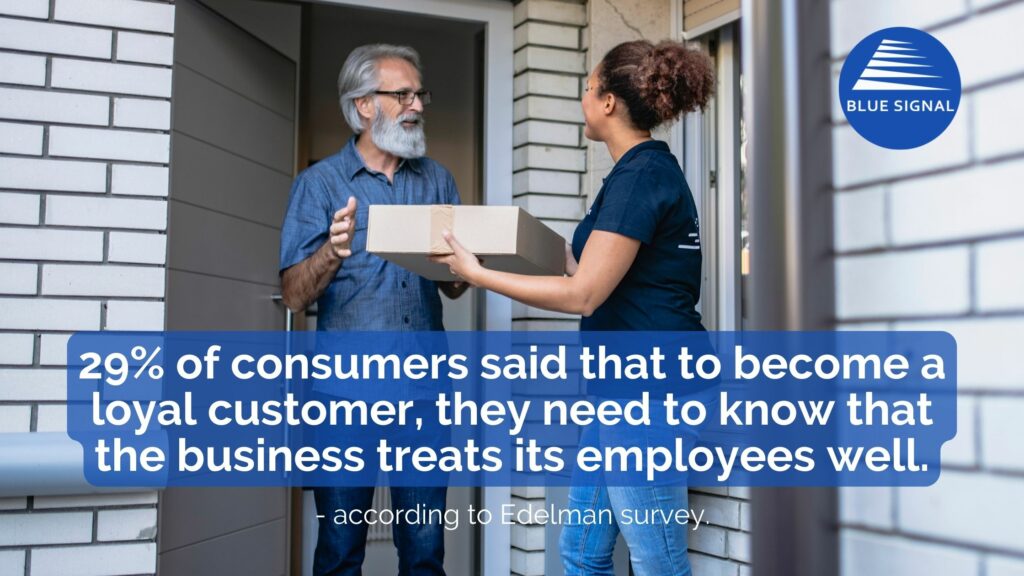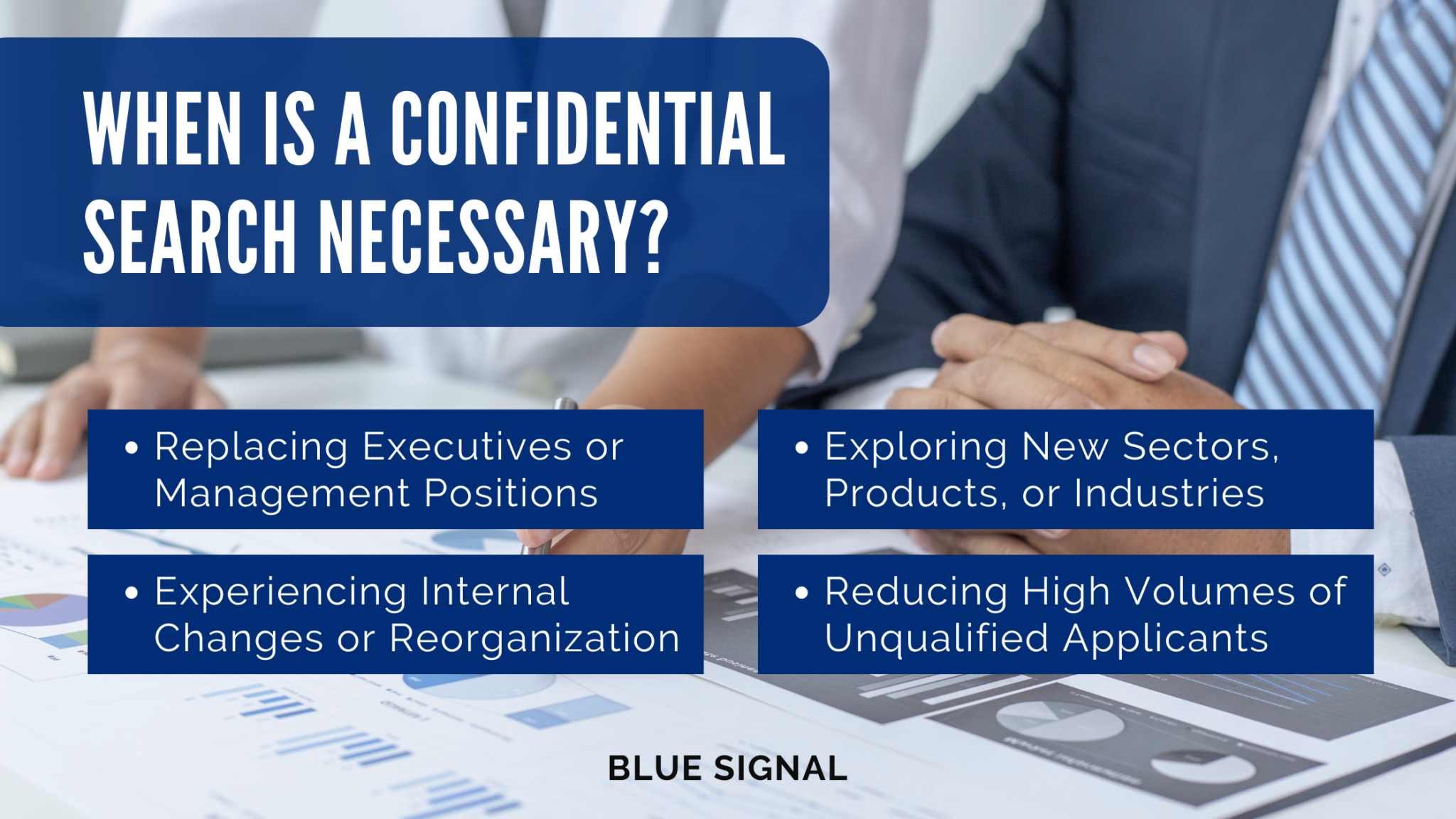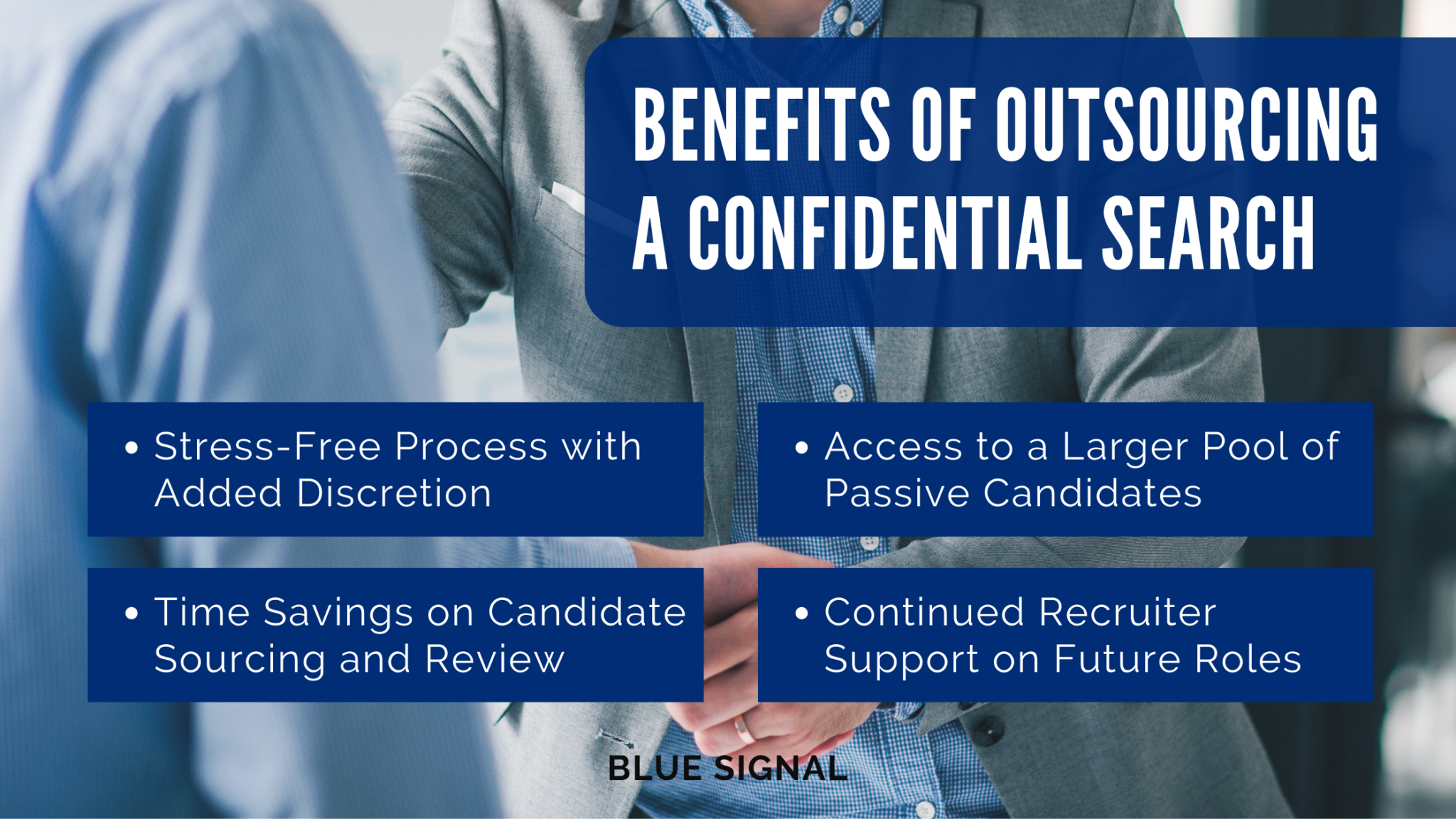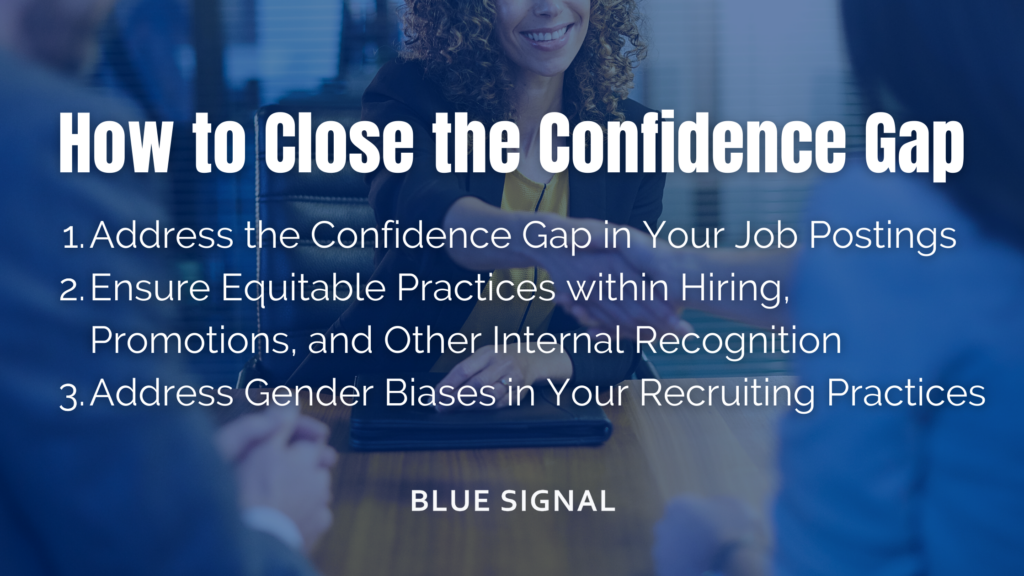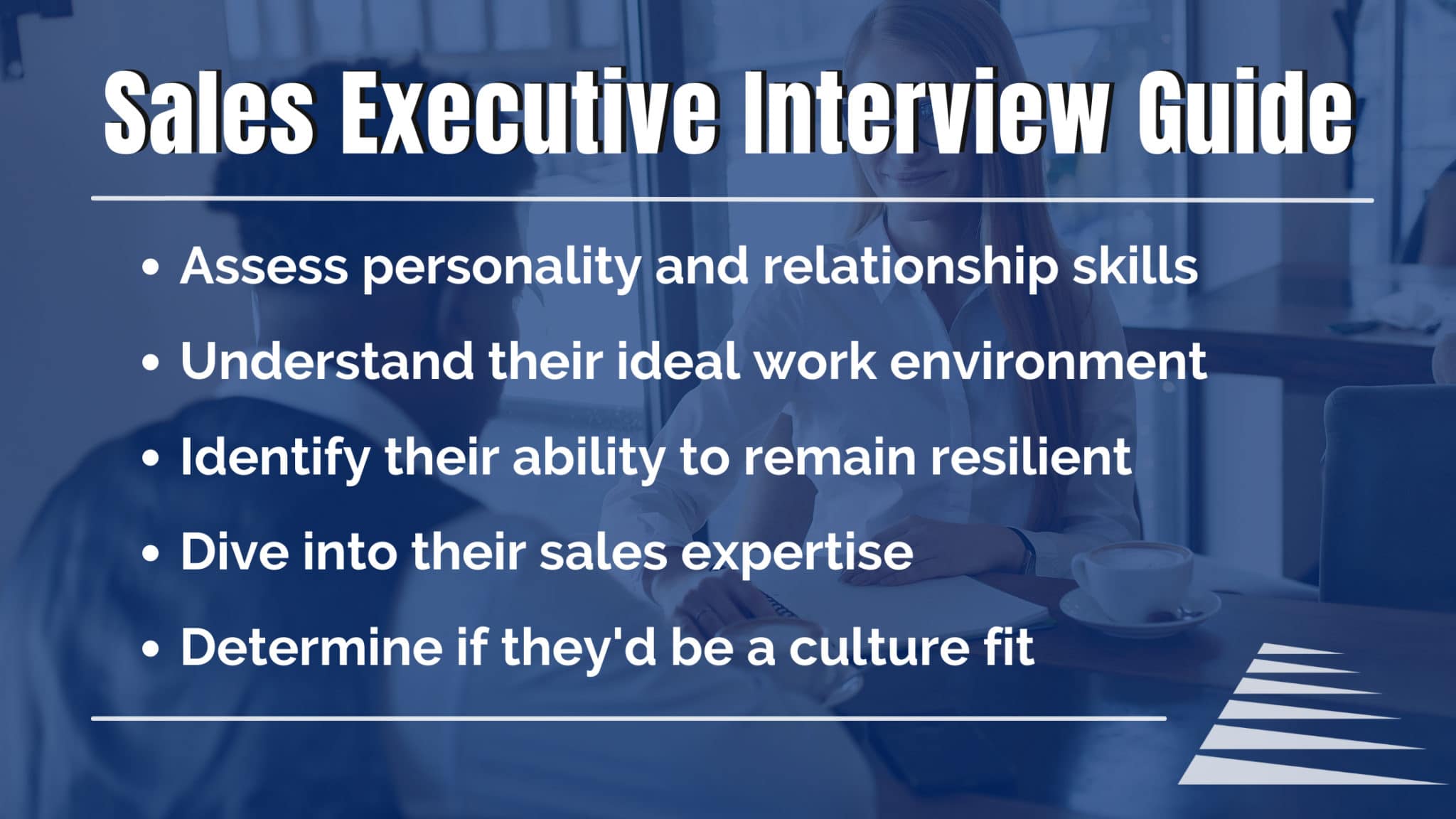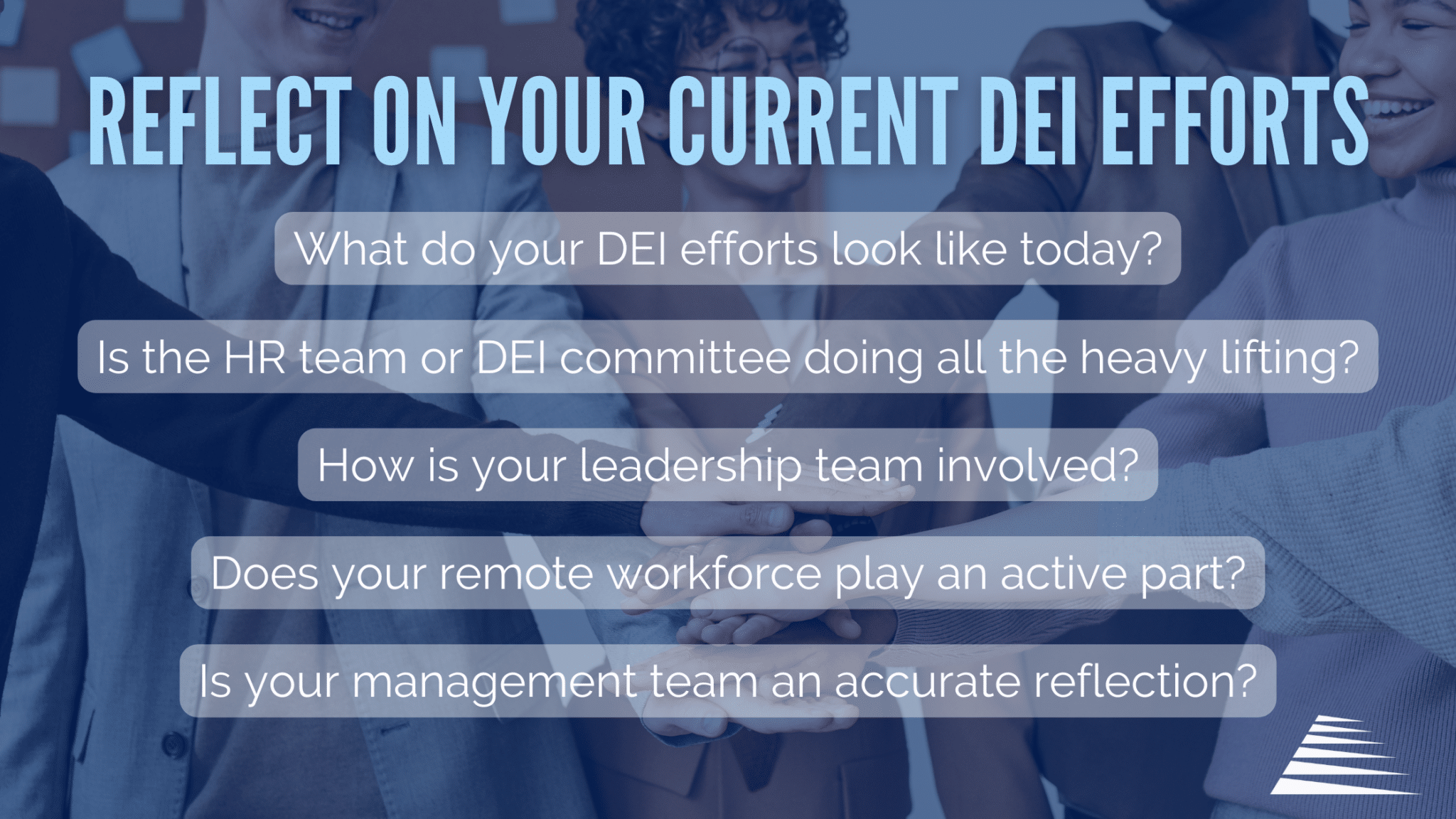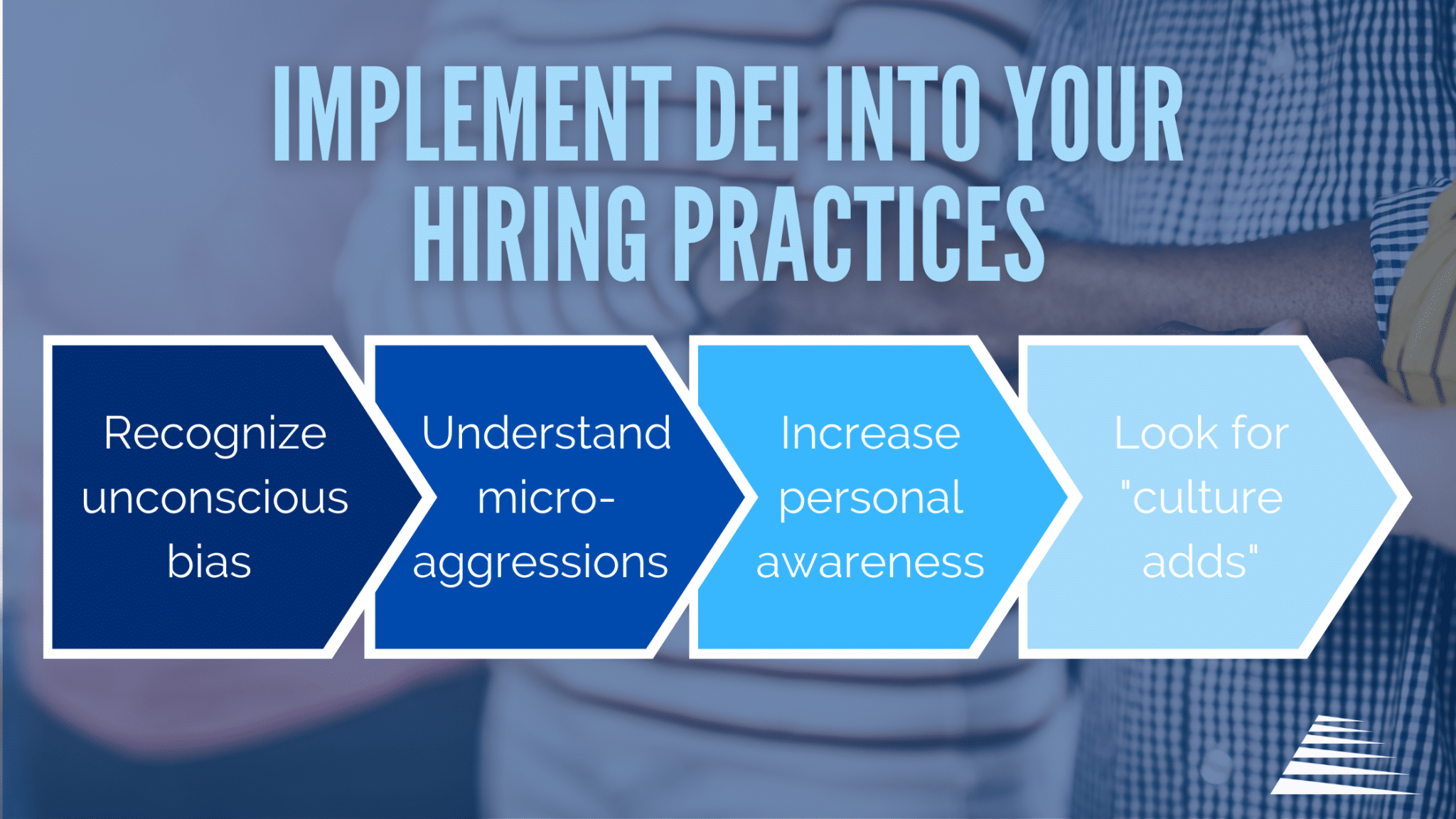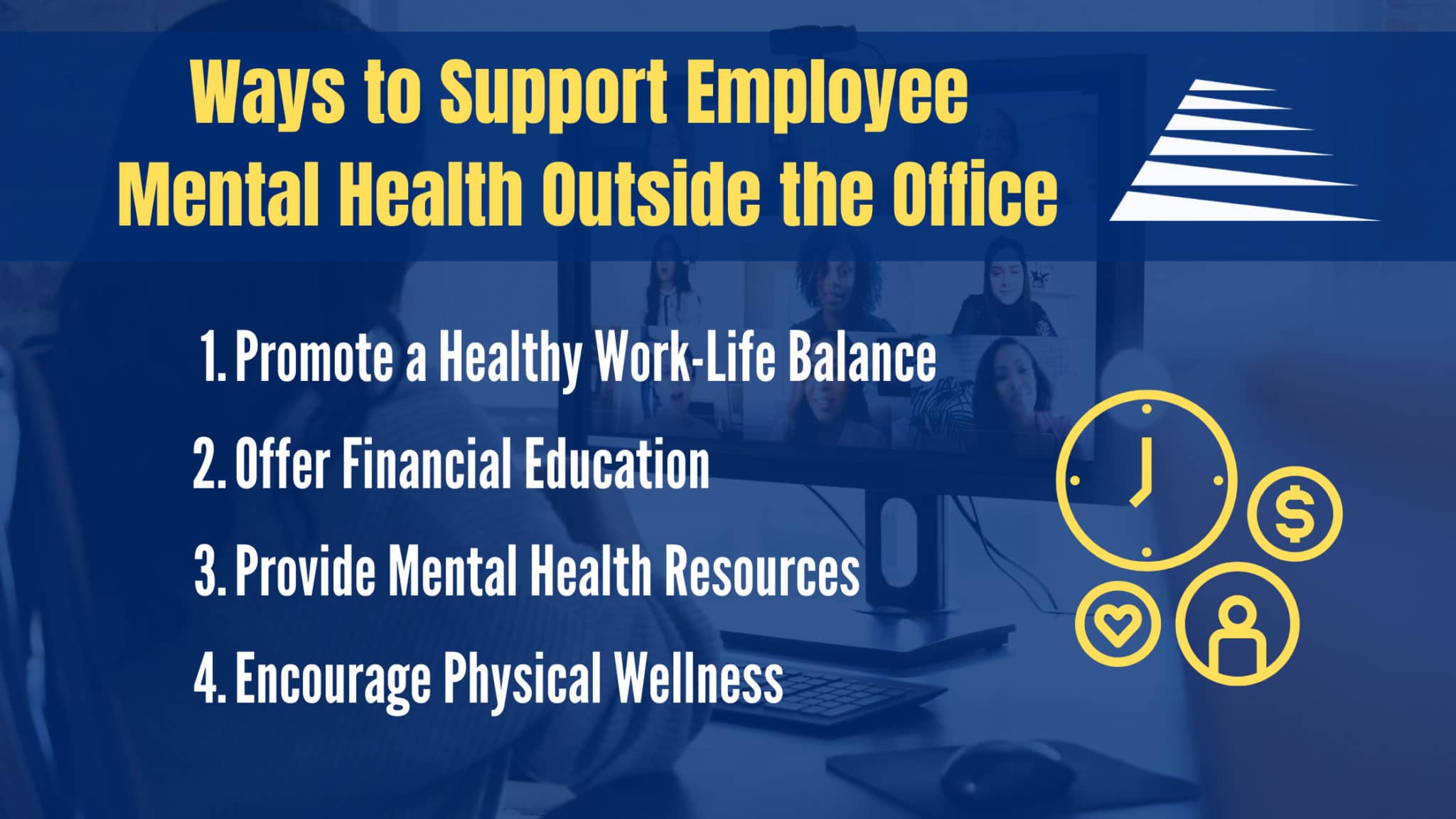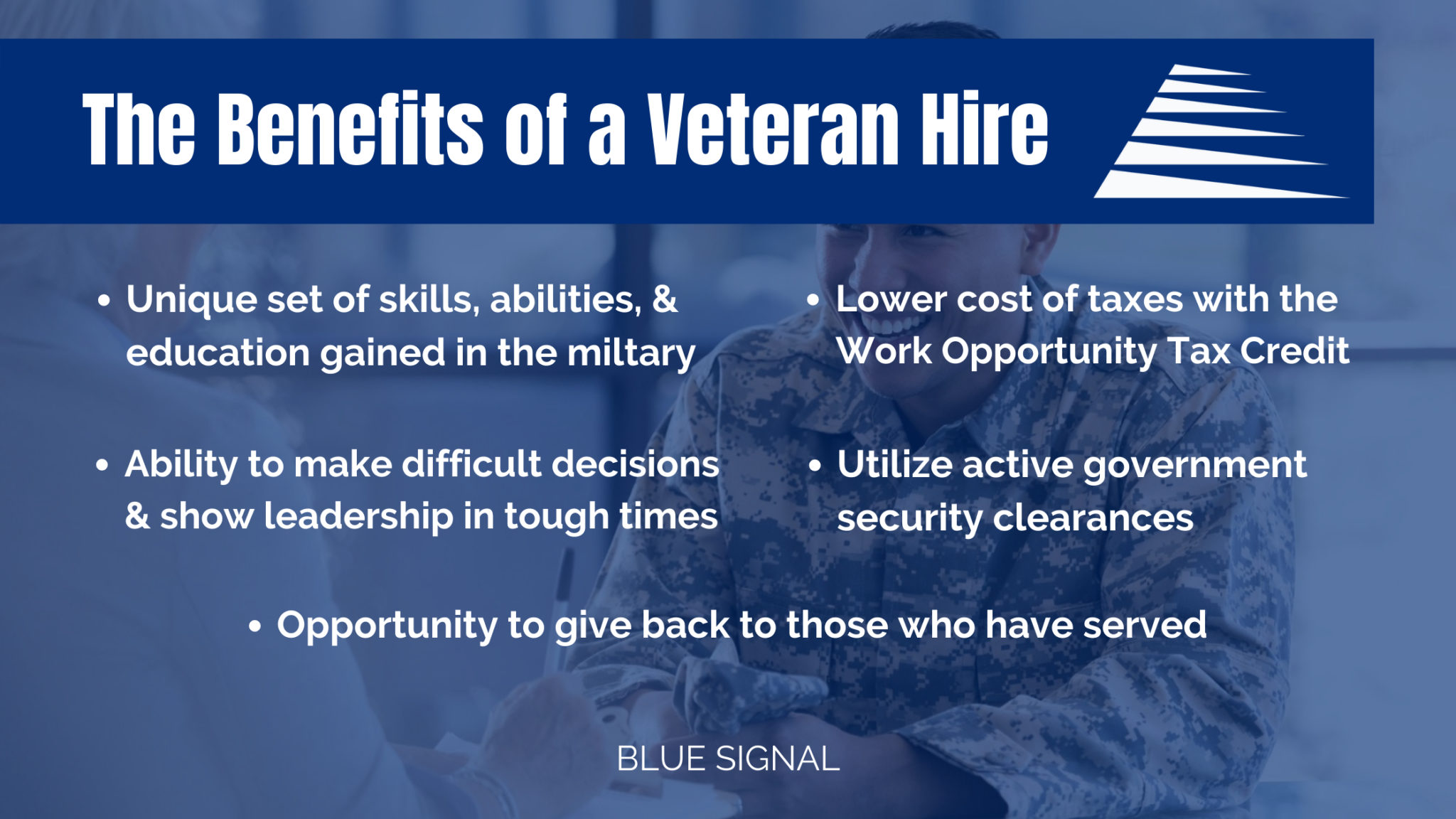As the end of 2022 rapidly approaches, many companies are beginning to look forward to the new year. This is the best time of year for planning and goal setting – which includes curating a hiring plan! It is exciting to anticipate future growth and accomplishments, however, we would be remiss to not address the impending recession. While experts agree a global recession is likely coming at some time in 2023, it is nearly impossible to predict its severity or length. No matter the case, many companies will likely feel the effects of the upcoming recession.
Not all hope is lost, though! In fact, a report from NACE provided an encouraging statistic showcasing that employers project a 14.7% increase in hiring for the class of 2023 college graduates. With all of that in mind, it is crucial to build an effective recession hiring plan to not just survive, but thrive through the recession and beyond. As a senior leader, it’s important to create a recession hiring plan, commit to it, and follow through. In times of uncertainty, your team will be looking to you for guidance, so it is crucial that you remain transparent and carry out your recession hiring plan. But how?
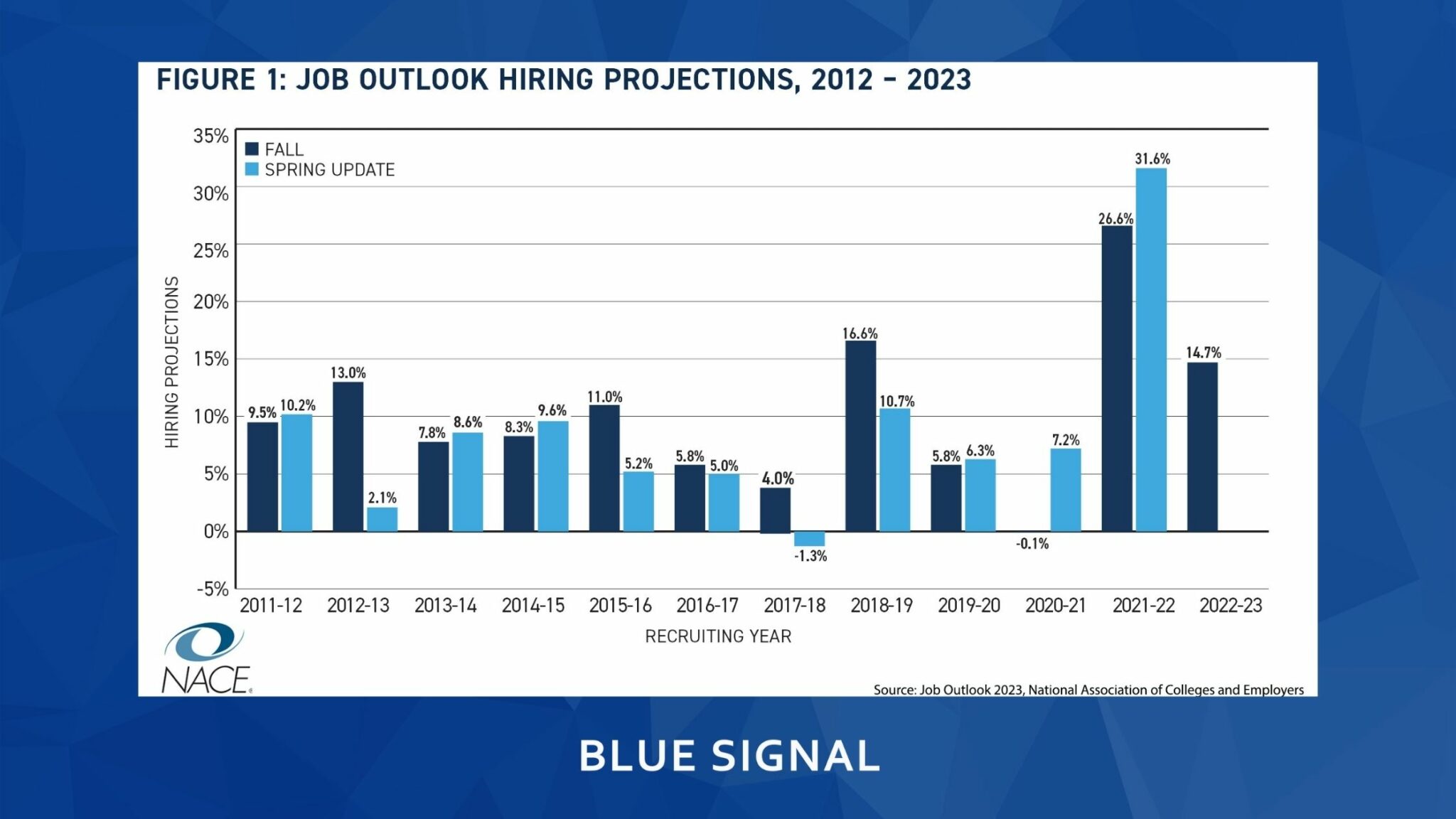
2023 Hiring Outlook
The first step in building an effective recession hiring plan is to evaluate the future hiring landscape. The US talent acquisition outlook is always challenging, and that trend will likely prevail in 2023 due to the fear of a recession and its effects. One positive prediction from experts is the expectation that demand for workers in America will continue to outpace supply in 2023. In addition, businesses will also face greater demand for highly skilled workers that local talent cannot cover. This means the 2022 trend of remote work dominating job openings is here to stay. This is an advantage when building a recession hiring plan as hiring managers will be able to source and hire talent outside their area!
Why It’s Important to Have a Recession Hiring Plan
It may seem counterintuitive, but a recession can be a great opportunity for a company to grow. Hiring and retaining high-quality workers is an essential growth strategy amid an impending recession. In fact, Bain & Company's research of past recessions showed a glaring difference in the outcomes of businesses that remained assertive in a slow economy, compared to those that took a more conservative approach. Also, companies that have continued to hire during a recession have been able to take advantage of the market. If you can, make it a priority to look for new hires during a recession — you may find the best talent is suddenly available. Since this type of financial climate can ultimately impact your bottom line, having a clear sense of your needs and filling and retaining your crucial roles first can help you streamline your budget without sacrificing essential hires. Therefore, it’s important to be even more strategic when it comes to your recession hiring plan in order to stay ahead of the challenges of a recession.
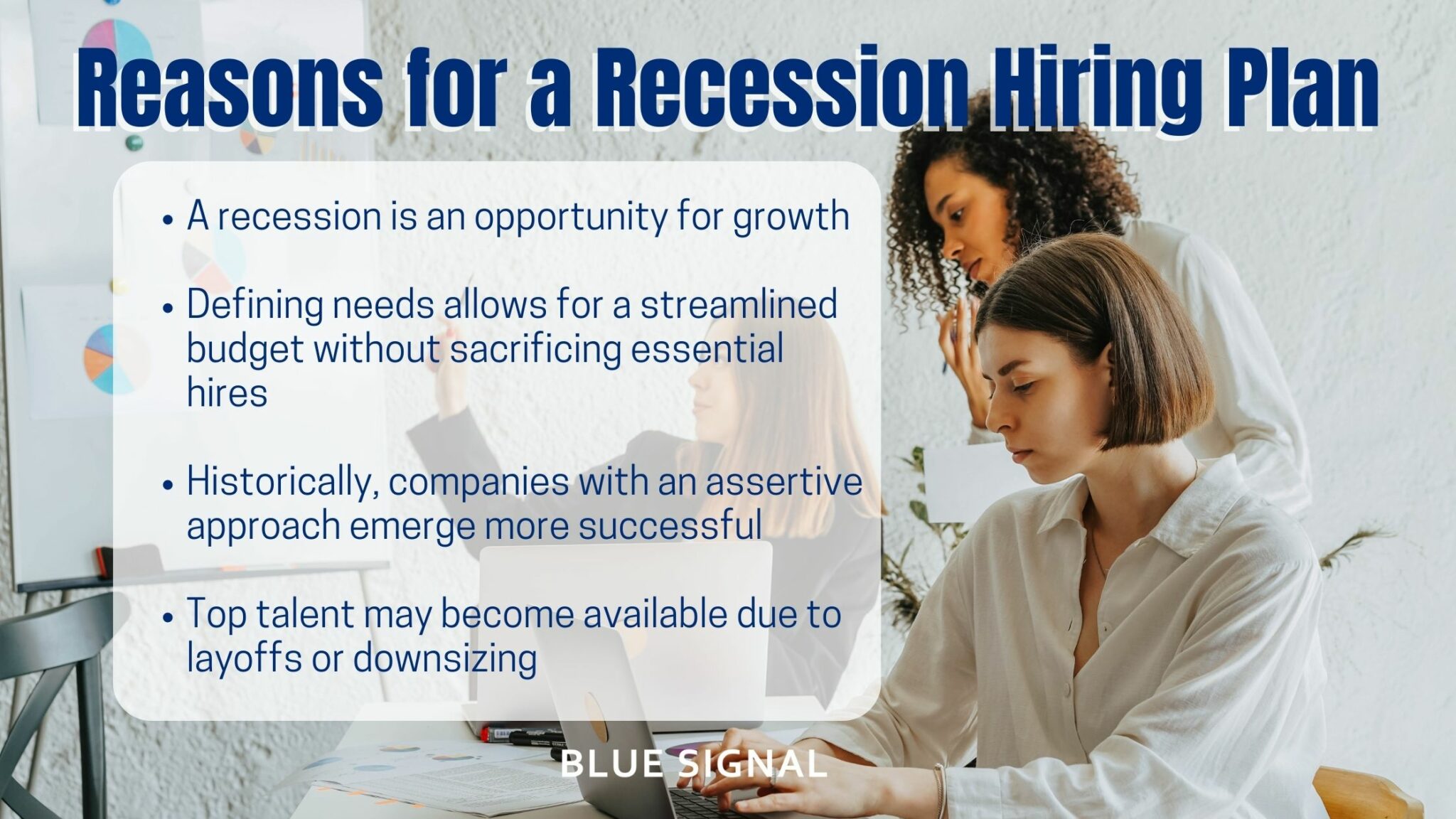
Strategies for Building a Recession Hiring Plan
Thus far, we have addressed concerns regarding an impending recession and looked at predicted hiring trends for the coming year. Also, we’ve discussed the “why” behind building your company’s recession hiring plan. Now it’s time to look at the “how.” Both facets of your recession hiring plan will help you determine the best path to hiring and success through the recession, as well as beyond it.
Look Beyond Layoffs
Companies that emerged from prior recessions the most successful, leaned less heavily on layoffs to cut costs, and relied more on operational improvements as a part of their recession hiring plan. It is well known that layoffs can hurt team morale and dampen productivity. Across-the-board pay cuts or hiring freezes that fail to consider employee productivity have been found to backfire, damage morale, and drive away the most valuable employees. However, some layoffs are inevitable during an economic downturn. If your company layoffs are unavoidable, consider utilizing an outplacement program like the one provided by Resume and Career Services. This program strives to soften the impact of displacing employees by providing expert resources, tools, and skills needed to find a new position fast.
Diversify Talent Sourcing
A recession can serve as a time for your company to seize the opportunity for recruiting new and unique talent. In fact, 44% of business owners who participated in a Universum survey said they would cast a wider net to attract new talent. There are two ways to go about diversifying where you find talent to enhance your recession hiring plan. One way is to look outside of local regions in which you typically recruit. By removing geographic limitations on job searches and considering remote applicants, you can truly hire the best of the best — not just the best of who’s located nearby. Another way is to be open to candidates who may not be an exact fit for the role but are looking for growth opportunities and have the drive to learn a new skill in your industry. While focusing on work experience alone may make them look less qualified on paper, transferable skills are valuable and often make up for any gaps in experience. These candidates also give you the opportunity to train them on your specific business processes without their sometimes biased, past experiences interfering.
Leverage Recruiters
According to a LinkedIn article on 2023 job trends, we can expect an uptick in candidates partnering with recruiters. Therefore, companies should consider partnering with a recruitment agency that already has a thorough recruiting process — one with the expertise, experience, time, and resources to pitch your organization to top talent and successfully attract those individuals to your company.
Good recruiters will specialize in an industry and have a finger on the pulse of hiring trends affecting that market, as well as a network of top talent looking for new opportunities. It is especially important to keep a recruiter in your back pocket that has solid relationships with sought-after, passive candidates. This will give your recession hiring plan an advantage in the recruiting process without spending valuable time sourcing candidates on your own.
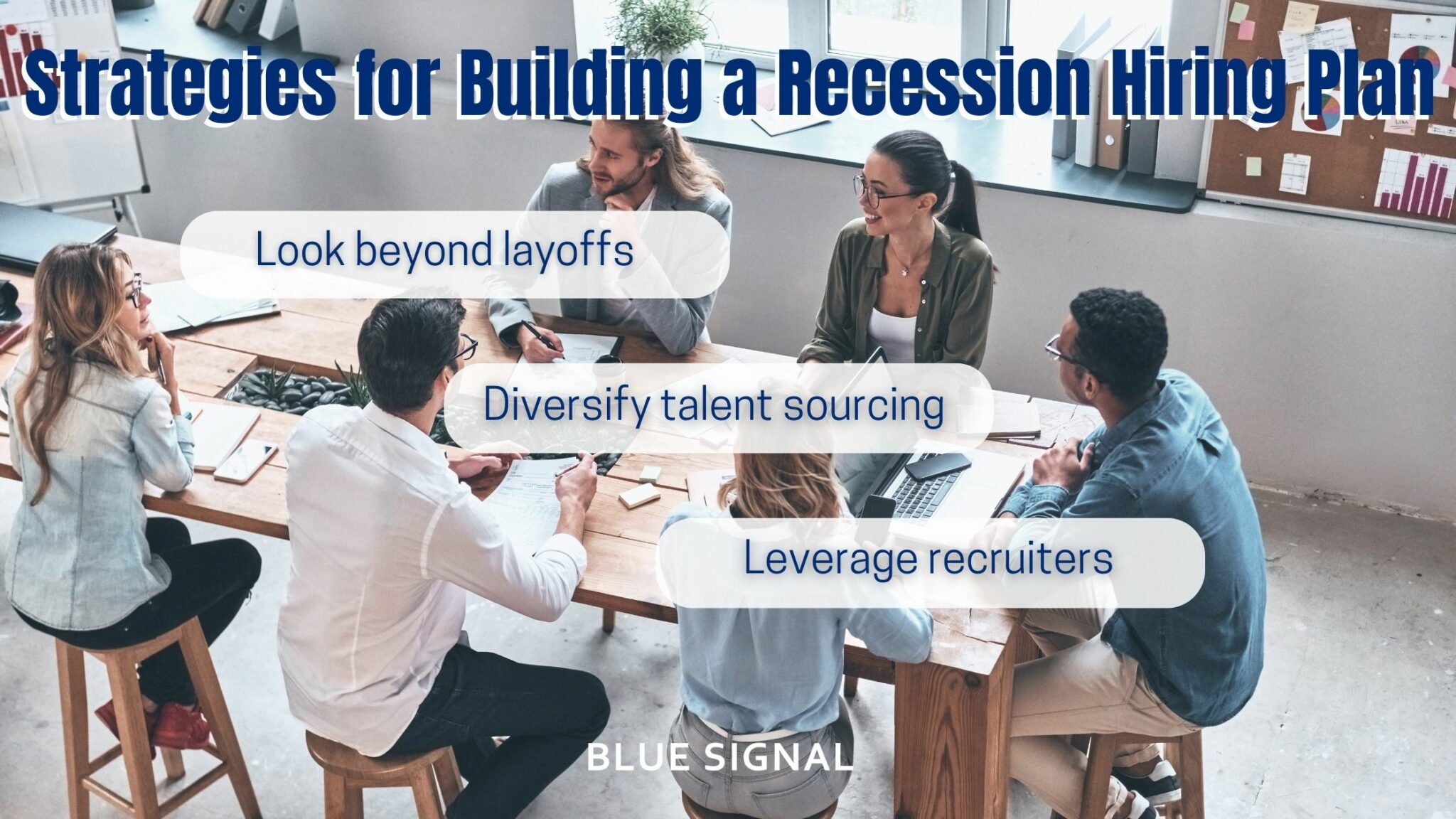
As leaders in the recruiting industry, Blue Signal is uniquely aware of hiring challenges, especially during an economic downturn. However, there are ample opportunities for growth and a lot to look forward to in 2023 despite overall projections showcasing a daunting landscape. The number one thing hiring managers and departments can do in the face of these predictions is formulate a strong recession hiring plan and follow through. This recession hiring plan should include strategizing beyond just layoffs, casting a wider net of potential candidates, and leveraging recruiters to gain access to industry trends and top-tier candidates. Not sure where to start? Reach out to the team at Blue Signal today for an intake call to address your hiring needs.


